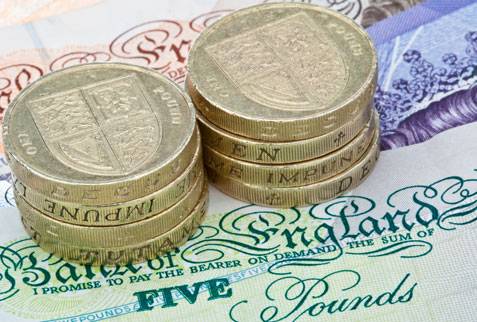In the world of international currencies, the British pound, GBP often referred to as sterling, has been making headlines recently. Sterling’s value has been on a downward spiral in European trade, facing significant losses against a basket of major rivals, especially the US dollar. This decline has raised concerns as the UK economy unexpectedly shrank, plunging to a three-month low. In this article, we’ll delve into the factors contributing to this decline, the impact on global markets, and the implications for future economic developments.
GBP The Data Dismay
The root cause of sterling’s recent woes lies in the disheartening economic data coming out of the United Kingdom. Recent reports revealed that the UK’s Gross Domestic Product (GDP) contracted by a staggering 0.5% in July, a far cry from the expected recession rate of 0.2%. This dismal performance has sent shockwaves through the financial world, indicating that the UK economy is sliding into a deeper recession than initially anticipated.
GBP The Domino Effect
The ramifications of the UK’s economic struggles extend beyond its borders, impacting the global currency market. The most immediate consequence has been the depreciation of the pound against the US dollar. The GBP/USD pair has witnessed a 0.4% drop, with the exchange rate plummeting to 1.2441, its lowest point since June 23. This decline marks the second consecutive session of losses for sterling against the greenback.
GBP The Dollar’s Ascendancy
Conversely, the US dollar has been on the upswing, gaining strength in response to the UK’s economic turmoil. Investors are eagerly awaiting crucial US inflation data, set to be released this week. This data is expected to provide valuable insights into the future trajectory of US interest rates. The anticipation of potentially higher interest rates in the US has bolstered the dollar’s position in the currency market.
Uncertain Times Ahead
The poor performance of the UK economy has cast doubt on the possibility of interest rate hikes by the Bank of England later this year. Andrew Bailey, the Governor of the Bank of England, recently indicated that the central bank is on the verge of concluding its current phase of policy tightening and interest rate increases. This statement has added to the uncertainty surrounding sterling’s future.
The Dollar’s Ascent Continues
In parallel with sterling’s decline, the US dollar index has risen by 0.2%, marking its second consecutive gain against a basket of major rivals. The dollar’s continued ascent underscores the global shift towards a stronger dollar in the face of economic uncertainties elsewhere.
Looking Ahead
As we move forward, all eyes are on the upcoming US consumer price data release, scheduled for later today. This data is crucial for gauging the likelihood of another US interest rate hike, which currently stands at 41% for November. The outcome of this release will undoubtedly have a profound impact on global financial markets.
In conclusion, sterling’s recent struggles in European trade are intimately tied to the UK’s unexpected economic contraction. As the US dollar gains momentum ahead of critical inflation data, the future of both currencies hangs in the balance. The uncertainty surrounding the Bank of England’s interest rate policy further complicates the picture. Investors and analysts alike are keeping a close watch on economic indicators as they navigate these turbulent financial waters.
FAQs
1. Why did the UK economy shrink unexpectedly?
- The UK economy contracted unexpectedly due to a 0.5% decline in GDP in July, surpassing expectations of a 0.2% recession rate.
2. How has the sterling-dollar exchange rate been affected?
- The GBP/USD pair fell by 0.4%, reaching its lowest point since June 23, as sterling weakened against the US dollar.
3. Why is the US dollar gaining strength?
- The US dollar is strengthening in anticipation of potentially higher interest rates in the United States, supported by crucial US inflation data.
4. What are the implications of the UK’s economic struggles on interest rates?
- The poor performance of the UK economy has raised doubts about potential interest rate hikes by the Bank of England, as indicated by Governor Andrew Bailey.
5. What should investors watch for in the near future?
- Investors should closely monitor the release of US consumer price data, which will provide insights into the likelihood of another US interest rate hike in November.

